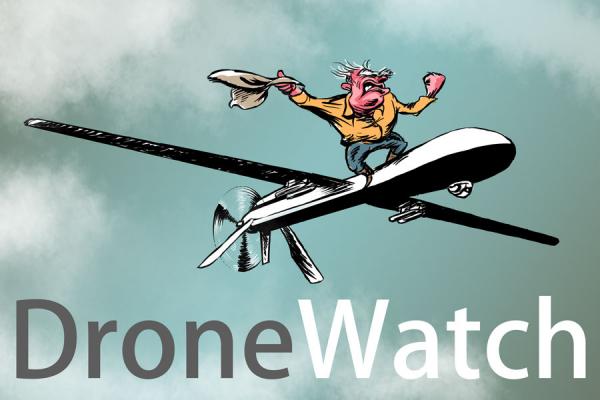As an antidote to all the stories of killing by drone, I’ve been collecting stories of the good things unpiloted aircraft can potentially do, or are already doing. Many are tasks now being carried out by piloted airplanes and helicopters, but drones bring advantages. They can fly higher, can stay in the air longer, and can fly in more dangerous terrain or situations with no risk to pilots.
Here are 10 things.
1. Monitoring crop watering. “A researcher from Ohio State University envisions the day — less than a decade from now — when a farmer waters the crops then launches an unmanned aerial vehicle to monitor precisely where the water went.” (Dayton Daily News)
2. Acting as lifeguards for beaches. “Surf Life Saving Australia says unmanned aerial drones will patrol some Queensland beaches this summer. … the drones, which have a wingspan of one metre, use cameras to search for swimmers in distress. … the drones will be fitted with flotation buoys that can be dropped down to the ocean.” (Australian Broadcasting Corporation)
3. Monitoring endangered species. “For the past few months, drones have been flying over the tropical forests of south-east Asia to map endangered species. A dozen of these unmanned aircraft, fitted with a video camera and an autopilot, have been deployed and will be joined by several more.” (Guardian)
4. Covering news stories. “A drone originally developed for military use could soon be used by television stations and journalists as a news-gathering device.” (CBS DC)
5. Monitoring coastal birds. “The Oregon Department of Fish and Wildlife department was extremely excited to share its first attempt to use drone, or nonpiloted, aircraft to monitor the double-crested cormorant off the coast of Oregon in July.” (Klamath Falls Herald & News)
6. Studying hurricanes. “As of early September, NASA was geared up to begin sending a pair of drones bristling with meteorological sensors soaring high above oncoming storms to try and get a better handle on the poorly understood question of what makes hurricanes gain or lose intensity as they evolve.” (Climate Central)
7. Fighting wildfires. “The [Northern Ireland] Fire and Rescue Service is to test the potential use of unmanned drones during large scale incidents such as flooding and gorse fires. … Max Joyce, assistant group commander, of the Northern Ireland Fire and Rescue Service said: … "We know that using drones will enable fire officers to get an aerial view of operational incidents in real time thereby enhancing the safety and wellbeing of our community and firefighters.” (BBC Northern Ireland)
8. Photographing remote places. “Civilians have increasingly turned to drones to shoot ground-breaking footage of adventure sports. This summer a Swiss expedition used remote-controlled helicopters to shoot rare footage of climbers on the Karakoram, one of the world's most demanding and formidable mountain ranges.” (Associated Press)
9. Monitoring water flow. “Scientists are using remote-control planes to record video of changes in the Elwha River following the removal of two Olympic Peninsula dams. … the video will help estimate how much sediment is spilling into the Strait of Juan de Fuca following the removal of the Elwha and Glines Canyon dams. The images also show changes in the riverside habitat.” (AP/Seattle Post-Intelligencer, Reporting from The Peninsula Daily News)
10. Drone artists. “Baltimore: During the Patterson Park pagoda's 120 years of existence, it has been photographed, painted and otherwise rendered too many times to count. But never in all that time did anyone depict the landmark the way Terry and Belinda Kilby just did.
“No one zoomed in close enough to count each roof tile. No one let you see right over the balcony rail and onto each of the three decks. No one swooped in like a pigeon would, coming in beak-level with the weather vane to take in the observatory's 60-foot span and the city's northeastern neighborhoods stretching behind it.
“The husband-and-wife team from Owings Mills is among the region's — and the country's — first drone artists, taking the essence of what had been the military's purview, unmanned flight, and using it to photograph urban attractions.” (Baltimore Sun)
Duane Shank is senior policy adviser at Sojourners.
Got something to say about what you're reading? We value your feedback!
